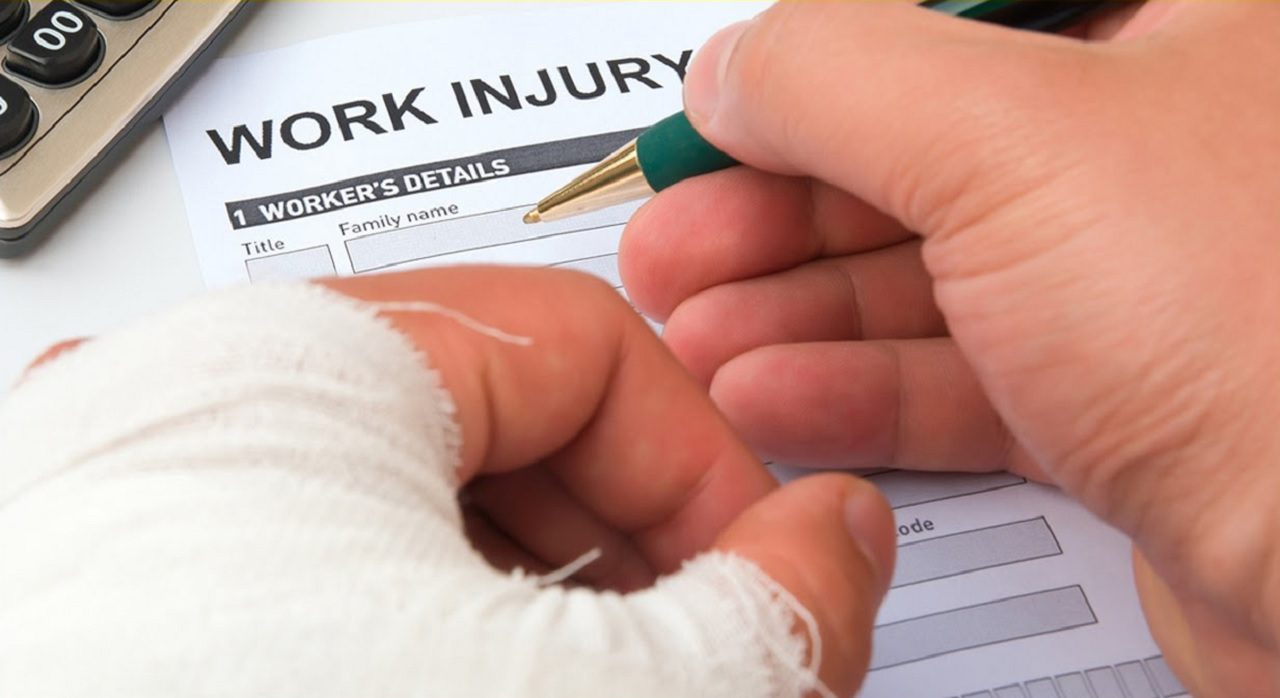Work-related injuries encompass a broad spectrum of incidents that occur in the course of employment, affecting workers across various industries. These injuries can range from acute incidents, such as slips and falls, to chronic conditions resulting from repetitive strain or exposure to hazardous materials. The nature of work-related injuries is often influenced by the specific environment in which an employee operates.
For instance, construction workers may face risks associated with heavy machinery and heights, while office workers might contend with ergonomic issues leading to musculoskeletal disorders. Understanding the nuances of these injuries is crucial for both employees and employers, as it lays the groundwork for addressing safety concerns and ensuring proper compensation. The impact of work-related injuries extends beyond the immediate physical harm to the employee.
They can lead to significant emotional and psychological distress, affecting not only the injured worker but also their families and colleagues. The financial implications are also considerable; medical expenses, lost wages, and potential long-term disability can create a substantial burden. Moreover, the workplace environment may suffer from decreased morale and productivity as employees grapple with the fear of injury or the repercussions of an incident.
Therefore, a comprehensive understanding of work-related injuries is essential for fostering a safe work environment and promoting the well-being of all employees.
Key Takeaways
- Work related injuries can occur in any industry and can have serious consequences for employees.
- Workers’ compensation laws vary by state and provide benefits to employees who are injured on the job.
- Negligence and liability play a key role in determining whether an employer can be held responsible for a work related injury.
- Employers have a responsibility to provide a safe work environment and to carry workers’ compensation insurance.
- Filing a lawsuit against your employer for a work related injury can be a complex process that requires legal expertise.
- Proving your case in a work related injury lawsuit may involve gathering evidence and witness testimony.
- Potential settlements and damages in work related injury cases can include medical expenses, lost wages, and pain and suffering.
- Seeking legal counsel from an experienced attorney can help navigate the complexities of work related injury cases and ensure fair compensation.
Workers’ Compensation Laws
Workers’ compensation laws are designed to provide financial support and medical care to employees who suffer work-related injuries or illnesses. These laws vary significantly from state to state, but they generally establish a no-fault system that allows injured workers to receive benefits without needing to prove negligence on the part of their employer.
**Key Benefits and Limitations**
The benefits provided under workers’ compensation can be extensive, but they are not without limitations. In most jurisdictions, employers are required to carry workers’ compensation insurance, which covers medical expenses, rehabilitation costs, and a portion of lost wages. However, there may be restrictions on the types of treatments deemed necessary or reasonable.
**Navigating the System**
Understanding these laws is vital for employees seeking to navigate the complexities of their rights and entitlements following an injury. It is also essential for employers to be aware of their obligations under these laws to ensure compliance and foster a safe working environment. Workers’ compensation benefits often do not account for pain and suffering, which can be a significant aspect of an injured worker’s experience.
Negligence and Liability

Negligence plays a pivotal role in determining liability in workplace injury cases. To establish negligence, it must be demonstrated that an employer failed to meet a standard of care that resulted in harm to an employee. This standard of care can vary depending on the industry and specific circumstances surrounding the injury.
For example, in a manufacturing setting, an employer may be expected to implement rigorous safety protocols and provide adequate training for employees operating heavy machinery. If an employee is injured due to a lack of safety measures or insufficient training, this could constitute negligence. However, proving negligence is often complex and requires a thorough investigation into the circumstances surrounding the injury.
Factors such as employee behavior, adherence to safety protocols, and environmental conditions must be considered. In some cases, third parties may also share liability if their actions contributed to the injury. For instance, if a subcontractor’s negligence led to unsafe working conditions on a construction site, they could be held liable alongside the primary employer.
Understanding the intricacies of negligence and liability is crucial for injured workers seeking compensation beyond what workers’ compensation laws provide.
Employer Responsibilities
Employers have a legal and ethical obligation to provide a safe working environment for their employees. This responsibility encompasses various aspects, including maintaining equipment, ensuring proper training, and implementing safety protocols tailored to the specific risks associated with their industry. For instance, in industries such as construction or manufacturing, employers must conduct regular safety audits and provide personal protective equipment (PPE) to mitigate risks associated with hazardous tasks.
Failure to uphold these responsibilities can lead not only to workplace injuries but also to legal repercussions. In addition to physical safety measures, employers must foster a culture of safety within the workplace. This involves encouraging open communication about safety concerns and providing avenues for employees to report hazards without fear of retaliation.
Training programs should be regularly updated to reflect changes in regulations or best practices, ensuring that all employees are equipped with the knowledge necessary to perform their jobs safely. By prioritizing safety and adhering to their responsibilities, employers can significantly reduce the likelihood of work-related injuries and create a more productive work environment.
Filing a Lawsuit Against Your Employer
While workers’ compensation provides a pathway for injured employees to receive benefits without proving fault, there are circumstances where filing a lawsuit against an employer may be appropriate. This typically occurs when an employee can demonstrate that their injury resulted from gross negligence or intentional misconduct on the part of the employer. For example, if an employer knowingly disregards safety regulations or fails to address known hazards that lead to an employee’s injury, this could warrant legal action beyond workers’ compensation claims.
Filing a lawsuit against an employer involves navigating a complex legal landscape that requires careful consideration of various factors. Employees must gather evidence supporting their claims, which may include witness statements, medical records, and documentation of safety violations. Additionally, there are strict time limits for filing lawsuits known as statutes of limitations that vary by state and type of claim.
Understanding these legal nuances is essential for injured workers who wish to pursue litigation as a means of obtaining compensation for their injuries.
Proving Your Case

Establishing Employer Liability
The burden of proof typically lies with the injured employee, who must establish that their injury was directly caused by the employer’s negligence or misconduct. This often involves demonstrating that the employer had a duty of care towards the employee, breached that duty through negligent actions or omissions, and that this breach directly resulted in the injury sustained.
Gathering Compelling Evidence
Gathering compelling evidence is critical in building a strong case. This may include obtaining medical records that detail the nature and extent of the injury, as well as expert testimony from medical professionals regarding causation and prognosis. Additionally, documentation related to workplace safety practices—such as training records or incident reports—can help establish whether the employer adhered to industry standards.
Building a Robust Case
Witness statements from colleagues who observed unsafe conditions or practices can further bolster an employee’s claim. The combination of these elements creates a robust foundation for proving negligence and securing appropriate compensation.
Potential Settlements and Damages
When pursuing compensation for work-related injuries, understanding potential settlements and damages is crucial for injured employees. Settlements can vary widely based on several factors, including the severity of the injury, the impact on the employee’s ability to work, and any long-term consequences resulting from the incident. In many cases, employers may prefer to settle claims out of court to avoid lengthy litigation processes and associated costs.
Settlements can provide injured workers with immediate financial relief while also allowing employers to mitigate potential reputational damage. Damages awarded in workplace injury cases can be categorized into several types: economic damages cover tangible losses such as medical expenses and lost wages; non-economic damages account for intangible losses like pain and suffering; punitive damages may be awarded in cases involving gross negligence or intentional harm by the employer. The calculation of these damages often requires careful consideration of both current and future needs related to medical care and rehabilitation.
Engaging with legal counsel experienced in workplace injury cases can help injured employees navigate this complex landscape and advocate for fair compensation.
Seeking Legal Counsel
Navigating the intricacies of workplace injury claims can be daunting for injured employees; therefore, seeking legal counsel is often advisable. An experienced attorney specializing in workers’ compensation or personal injury law can provide invaluable guidance throughout the process. They can help assess the merits of a case, gather necessary evidence, negotiate settlements with insurance companies or employers, and represent clients in court if litigation becomes necessary.
Legal counsel can also assist in understanding the nuances of state-specific workers’ compensation laws and how they apply to individual circumstances. They can clarify rights under both workers’ compensation systems and potential avenues for pursuing additional claims against employers when warranted by circumstances such as gross negligence or intentional misconduct. By enlisting professional legal support, injured workers can enhance their chances of achieving favorable outcomes while alleviating some of the stress associated with navigating complex legal proceedings on their own.
If you are considering suing your job for a work-related injury, you may also want to explore the article on slip and fall injuries. This article provides valuable information on how to navigate legal issues surrounding slip and fall accidents in the workplace. Understanding your rights and options in these types of cases can be crucial in seeking compensation for your injuries.
FAQs
What is a work-related injury?
A work-related injury is any injury or illness that occurs as a result of the tasks or environment of a person’s job. This can include physical injuries from accidents, repetitive strain injuries, and illnesses caused by exposure to hazardous materials.
Can I sue my job for a work-related injury?
In most cases, employees cannot sue their employer for a work-related injury due to the workers’ compensation system. Workers’ compensation provides benefits to employees who are injured on the job, regardless of fault. However, there are some exceptions, such as cases of intentional harm by the employer or if a third party is responsible for the injury.
What is workers’ compensation?
Workers’ compensation is a form of insurance that provides medical benefits and wage replacement to employees who are injured on the job. It is a no-fault system, meaning that employees are entitled to benefits regardless of who was at fault for the injury.
What should I do if I am injured at work?
If you are injured at work, it is important to report the injury to your employer as soon as possible. You should seek medical attention for your injury and follow your employer’s procedures for filing a workers’ compensation claim. It is also a good idea to consult with an attorney who specializes in workers’ compensation to ensure that your rights are protected.

